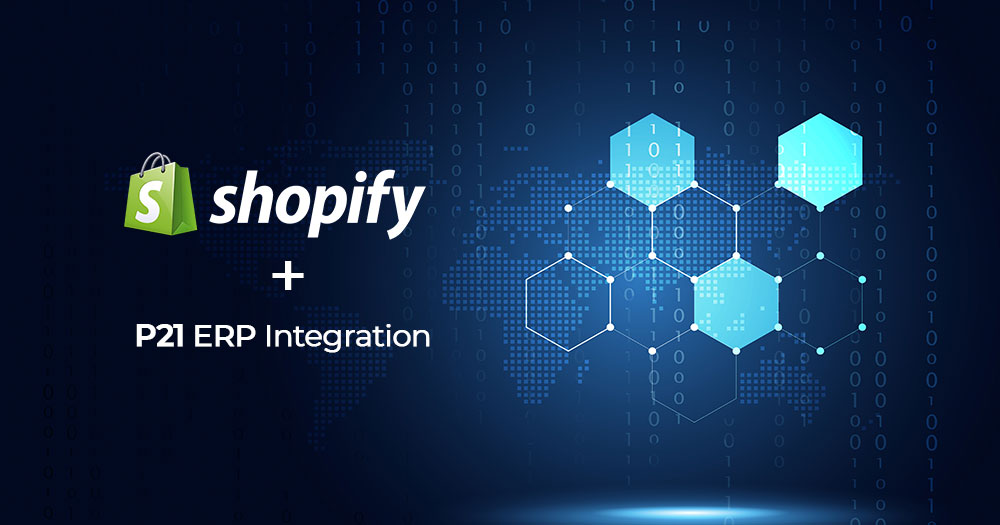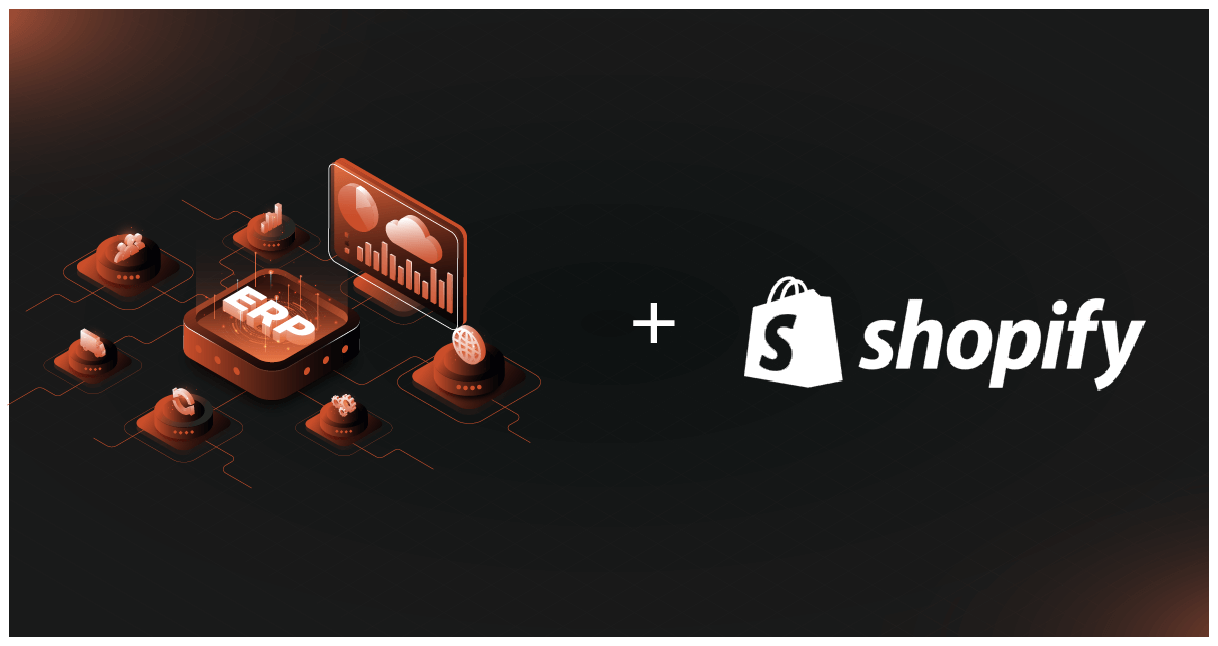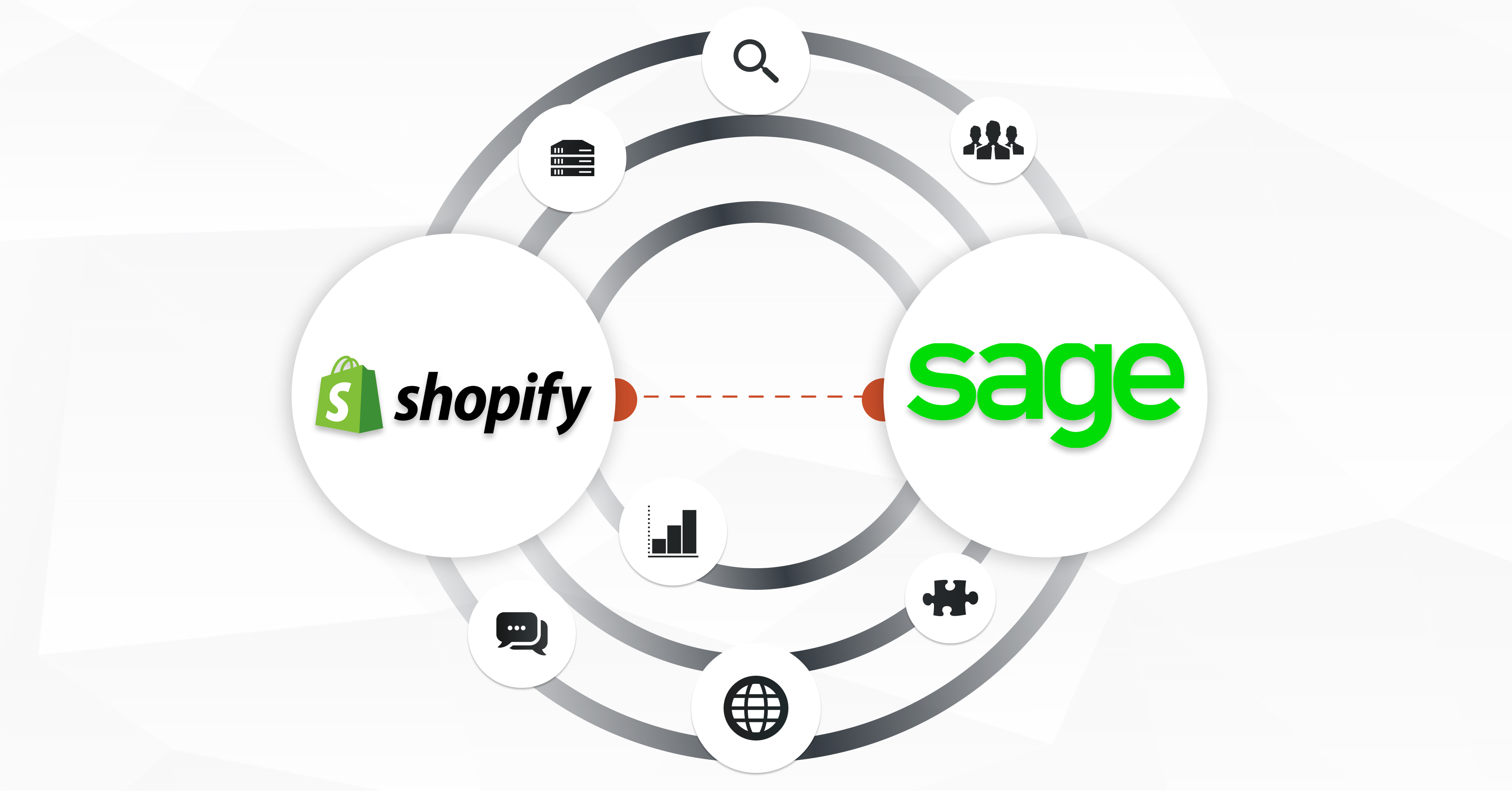Businesses need seamless integrations that work together without friction. An Acumatica Shopify integration does exactly that—bringing the power of cloud-based ERP and the ecommerce flexibility of Shopify under one roof. Whether you’re running a B2C store or managing complex B2B transactions, this integration offers companies a chance to streamline their business processes, enhance customer satisfaction, and ensure real-time data synchronization across platforms.
Methods to Integrate Acumatica with Shopify
There are several methods available for achieving this integration, each offering unique advantages based on business needs, scalability, and functionality. Here are different ways companies can integrate Acumatica with Shopify.
1. Custom API Integration
Custom API (Application Programming Interface) integration is a flexible and tailored approach that allows businesses to build a connection between Acumatica and Shopify according to their specific requirements. Acumatica’s open API and Shopify’s extensive API documentation make it possible to create a fully customized solution. Here’s how it works:
- Tailored to Unique Workflows: Businesses with highly specialized workflows, such as complex inventory rules or custom pricing, benefit from the flexibility of custom integration. APIs enable the automation of almost any process, from real-time inventory updates to customized order management workflows.
- Control Over Data Flows: With APIs, businesses can control how and when data flows between Shopify and Acumatica. This means they can decide what data to sync (e.g., orders, inventory, customer information), the frequency of syncing, and how errors or exceptions are handled.
- Scalability: For companies that expect significant growth or have multi-channel selling strategies, custom API integrations can be built to scale. Adding new features or enhancing existing functionality is possible without being locked into predefined constraints.
However, custom API integration typically requires a team with technical expertise to develop, maintain, and troubleshoot the integration, which can result in higher upfront and ongoing costs.
2. Third-Party Integration Tools
Another popular method for integrating Acumatica with Shopify is through third-party integration platforms. These platforms offer pre-built connectors that simplify the integration process without requiring extensive coding or customization. Some of the most well-known platforms include DCKAP Integrator, Celigo, and MuleSoft. Here’s why third-party tools can be a valuable option:
- Quick Implementation: Third-party integration platforms are often designed with ease of use in mind. Many offer drag-and-drop interfaces, allowing businesses to configure integrations without needing deep technical knowledge.
- Pre-Built Connectors: These tools often provide pre-built connectors specifically designed for common tasks like syncing orders, customers, and inventory between Acumatica and Shopify. This reduces the time and effort required to set up the integration, especially for smaller businesses or those with less complex requirements.
- Customization Features: While third-party platforms are not as flexible as custom APIs, they often allow for a degree of customization. Businesses can configure which data to sync, set conditions for triggering events, and automate key workflows.
The trade-off with third-party tools is that businesses may encounter limitations with deeper customization and control. They are often best suited for companies with standard ecommerce processes that don’t require highly specialized solutions.
3. Native Integration
Acumatica offers its own native integration solution, the Acumatica Commerce Connector for Shopify, designed specifically to connect the two platforms seamlessly. Here are the key benefits of using the native integration:
- Out-of-the-Box Functionality: Acumatica’s native integration is pre-built, meaning businesses can quickly connect their Shopify store with minimal setup. This makes it an attractive option for organizations looking for an easy and fast integration process without needing technical expertise.
- Real-Time Synchronization: The native connector ensures real-time synchronization of orders, inventory, and customer information between Shopify and Acumatica. Businesses can automatically push updates from Acumatica to Shopify, such as price changes, inventory levels, and promotions, ensuring both platforms are always in sync.
- Centralized Management: The native integration provides a unified interface to manage multiple Shopify stores within Acumatica. This centralized control helps businesses oversee their entire ecommerce operations, reducing errors and eliminating manual data entry.
Despite its many benefits, native integration can sometimes be less flexible for businesses with unique or highly complex workflows. It’s well-suited for companies seeking a streamlined, all-in-one solution without the need for heavy customization.
Also see: Acumatica ERP Integration: A Step-By-Step Guide
The Power of Acumatica Shopify Integration
Real-Time Data Synchronization
Instant data synchronization between Shopify and Acumatica ensures businesses operate with up-to-date information, minimizing errors, stockouts, and manual data handling. Orders, inventory levels, and financial data are always in sync, allowing businesses to act faster and more accurately across the board.
Centralized Operations Across Multiple Channels
Acumatica consolidates order management from various sales channels, including multiple Shopify stores and physical locations via Shopify Point of Sale (POS), into a single system. This unified approach reduces operational complexity and provides a centralized, easy-to-manage interface for both online and offline sales.
Improved Customer Satisfaction
With accurate, real-time data at your fingertips, businesses can provide customers with faster, more reliable service. The integration supports enhanced customer satisfaction and loyalty by ensuring smooth order processing, accurate inventory availability, and better order tracking.
Use Cases of Acumatica Shopify Integration
Order Management
Acumatica’s Shopify integration simplifies the entire order management process, handling both web orders and Shopify POS transactions. All orders flow into Acumatica in real time, giving businesses full visibility.
With the ability to manage multiple Shopify stores, order data is centralized, providing clear insights for customer service and warehouse teams. This eliminates manual data entry, ensuring faster and more accurate fulfilment.
Product Synchronization
Managing product listings across platforms is now seamless. Changes made in Acumatica—whether it’s updating pricing, descriptions, or stock levels—are automatically synced to your Shopify store.
This eliminates the need for manual updates, especially useful when dealing with a large number of SKUs. Additionally, discounts or promotions configured in Acumatica are mirrored in Shopify, allowing for easy catalog management.
Inventory Tracking
Real-time inventory tracking ensures that stock levels across channels are accurate, preventing out-of-stock issues.
Acumatica updates Shopify inventory levels instantly as orders are processed, giving your warehouse and fulfilment teams up-to-date information. This transparency helps reduce discrepancies, leading to smoother operations and better customer experiences.
Financial Reporting
With Shopify transactions flowing into Acumatica’s financial modules, businesses can generate precise financial reports that reflect ecommerce performance.
Whether it’s revenue, taxes, or profitability, all the key data points are synced automatically, reducing the need for manual reconciliation and enabling quicker, data-driven decision-making.
Customer and Sales Data Management
Acumatica ensures that Shopify customer information is automatically synced, creating a comprehensive view of each customer’s purchase history.
This helps businesses personalize marketing and sales efforts. Sales data is similarly organized, with all transactions from various Shopify sales channels syncing directly into Acumatica, providing an accurate view of overall performance.
Recommended read: ERP Integration with Shopify [Methods & Challenges]
Best Practices for a Successful Integration
Regular System Updates
Your ERP system and eCommerce platform are constantly evolving, and you don’t want to fall behind on important software improvements. Regular system updates ensure that your Acumatica-Shopify integration runs smoothly and leverages the latest features, security protocols, and performance enhancements.
Both Shopify and Acumatica roll out updates that enhance functionality and fix potential bugs. Keeping up with these updates not only boosts system stability but also ensures you remain compliant with industry regulations and PCI standards.
Data Backup Strategies
Data is the backbone of any business process, and with Acumatica-Shopify integration, you’re handling large volumes of customer data, order history, and inventory information. Establishing a robust data backup strategy ensures your critical business information is protected against system failures, cyberattacks, or unexpected errors.
Backups should be scheduled regularly, and you should periodically test your restoration procedures to guarantee smooth recovery in case of data loss.
Monitoring and Analytics
To truly maximize the potential of your integration, you need continuous monitoring and analytics to track system performance and identify potential bottlenecks. Acumatica offers a range of built-in reporting tools and dashboards that provide insight into key performance indicators (KPIs), helping you monitor:
- Order fulfillment rates
- Inventory levels
- Sales performance
- Customer satisfaction metrics
Shopify’s analytics can be mapped onto these metrics, allowing you to create a complete picture of your business operations. Regularly review these reports to ensure all processes are functioning at optimal efficiency.
Maximizing the Value of the Acumatica-Shopify Integration
The Acumatica-Shopify integration doesn’t just sync data—it brings holistic visibility to your business. Here are a few key points to consider to ensure you’re maximizing its potential:
- End-to-End Visibility: Every transaction syncs in real time between Shopify and Acumatica. This provides complete visibility across your inventory, orders, and financials, eliminating blind spots in your business.
- Streamlined Buying Process: Enhance the customer experience by supporting product variants and personalized items. This ensures that customers, whether B2C or B2B, enjoy a smooth buying journey from start to finish.
- Risk Management: Shopify’s fraud analysis integrates with Acumatica, allowing you to automatically flag suspicious orders and apply security measures like PCI-compliant payment processing.
- Custom Workflows: Build flexible workflows that cater to specific business models. Whether it’s dropshipping, warehouse management, or omnichannel sales, you can configure the system to align with your operational strategy.
DCKAP Integrator: For Seamless Acumatica-Shopify Integration
The integration brings together your ERP and eCommerce worlds, offering real-time data synchronization between inventory, orders, financials, and customer information. But here’s where things can get tricky: achieving a flawless integration without disruptions, data mismatches, or performance bottlenecks requires more than just a simple connector.
With DCKAP Integrator, businesses can navigate the complexities of Acumatica-Shopify integration and leverage advanced tools to automate processes, optimize inventory management, and ensure operational efficiency across the board.
Pre-built Connectors and Custom Workflows
Its pre-built connectors get your integration up and running fast, while the flow designer allows you to customize workflows tailored to your specific operational needs. Whether you’re dealing with multiple Shopify storefronts or complex B2B customer hierarchies, DCKAP Integrator scales alongside your company.
Plug-and-Play Integration
Forget about heavy development overhead. DCKAP Integrator is designed with a user-friendly interface that doesn’t require extensive coding knowledge. You can configure and manage your integration in a way that suits your team’s technical abilities, whether it’s updating product listings or automating manual order-to-cash processes.
Multi-Platform Connectivity
Your business doesn’t just run on Shopify and Acumatica. You’ve got CRM systems, marketing platforms, and maybe even third-party logistics software in the mix. DCKAP connects it all, ensuring that your data flows seamlessly between all these platforms, keeping your inventory and customer records accurate across every touchpoint.
Drive Business Growth with DCKAP Integrator
DCKAP Integrator is the ERP integration Platform. By unifying Shopify, Acumatica, and all your other platforms, DCKAP Integrator provides the tools to drive efficiency, reduce operational costs, and improve customer satisfaction.
From automating order management to offering real-time insights across all your channels, DCKAP Integrator equips you with the intelligence needed to scale. It ensures that you can personalize experiences, manage large data sets, and meet the demands of today’s fast-paced eCommerce landscape.
Click here to book a free demo.
FAQs
What are the benefits of Acumatica integration for ecommerce businesses?
Acumatica integration enables businesses to automate processes like inventory management and order fulfillment, improving efficiency and supporting a full omnichannel sales experience.
What key benefits can be expected from integrating Acumatica with Shopify?
Key benefits include better inventory management, improved supply chain visibility, and integrated customer insights, giving Shopify customers a more streamlined experience.
How do IT teams benefit from using Acumatica-Shopify integrations?
IT teams can leverage the quick integration capabilities of Acumatica to reduce manual workload, allowing them to focus on more strategic initiatives while ensuring system security and performance.
How does collaboration between marketing and IT teams improve with Acumatica-Shopify integration?
With tools like Acumatica, marketing teams gain access to real-time data, allowing better collaboration with IT teams to optimize campaigns and enhance customer experiences.
What role does the Shopify front-end play in ecommerce integration with Acumatica?
The Shopify front-end can be integrated with Acumatica ERP to provide a seamless user experience for ecommerce businesses. This allows for automated order processing, real-time inventory updates, and centralized management of both online and offline sales channels.
Contents




